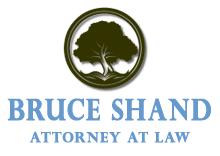Using Utah Trust Funds To Purchase A Home
As interest rates rise, more children of high-net-worth families are likely to tap into their trust funds to buy a home.
Buying a home in Salt Lake City or anywhere in Utah means chaining yourself to a mortgage and the financial institution holding it. This arrangement is oftentimes considered a necessary evil of adulthood. But then again, when there are trust funds available to help, buying a home might not be such a necessary evil at all.
Under the right circumstances, trusts may be tapped to assist you and your loved ones, even when it comes to bypassing the bankers and buying a home. This is more and more useful as interest rates rise.
Whether you are the beneficiary of a trust or just out to settle one, you will want to read a recent article in The Wall Street Journal titled “Tapping the Trusty Trust Fund to Buy a House.”
Essentially, a trust can operate in much the same manner as a bank, but without much of the onerous rates, rules, liens and stress. As a trust beneficiary, you can approach the trust for a “mortgage” in the form of a loan from the trust and the trustee can even grant the loan at little or no interest. Sometimes, you can even ask for a full distribution from the trust to finance the whole transaction.
In any event, your access to the trust funds is up to the trustee as guided by the rules of the trust itself. You see, some trusts are not designed to permit this for a variety of reasons, some known only to the person who established the trust. In addition, the trustee may have the interests of other trust beneficiaries to consider. Moreover, the fiduciary needs to consider the investment quality and profitability of the trust. Nevertheless, if there are no such limitations, then having access to trust funds can be a great blessing.
Depending on the language of the trust and your unique circumstance, the trust itself may be engineered specifically to own the house. Properly structured, ownership by the trust can provide important asset protection from potential divorces, lawsuits and bankruptcies. Alternatively, Qualified Personal Residence Trusts (QPRTs) and Intentionally Defective Grantor Trusts (IDGTs) can be extremely valuable in this regard, even though normally we talk about them in the context of transferring the family home.
If you are ready to create a trust for your beneficiaries, or perhaps are looking for creative ways to help your loved ones buy their first home, these are some options to explore.
Reference: The Wall Street Journal (September 19, 2013) “Tapping the Trusty Trust Fund to Buy a House”






